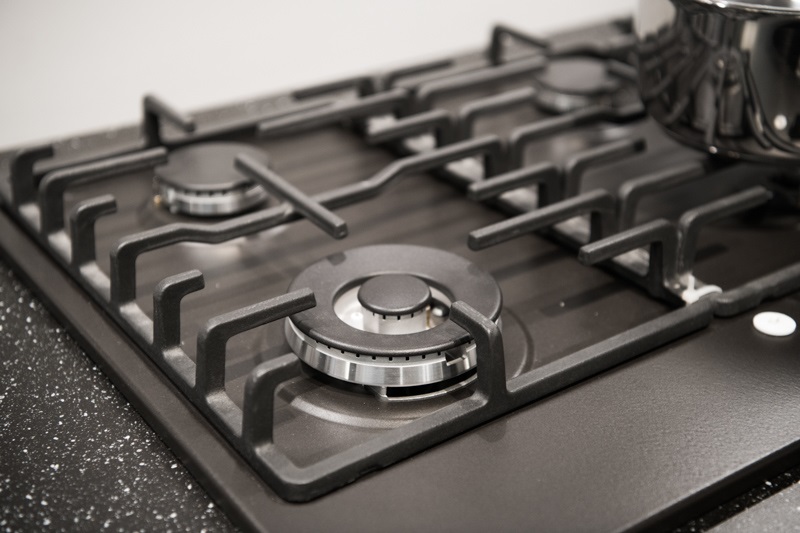Modern compound layouts, characterized by multiple structures within a single property, are becoming increasingly popular. They offer privacy, flexibility, and unique living experiences. However, managing such expansive spaces can be challenging. This is where smart home technologies step in, offering innovative solutions to streamline everyday living, enhance security, and create a truly connected home environment.
The Rise of Compound Living
Compound living is gaining traction for various reasons. Multigenerational families find it ideal for accommodating different age groups while maintaining independence. Remote workers appreciate dedicated home offices away from the main living areas. Some homeowners even rent out additional structures as income-generating properties. Regardless of the motivation, compound living presents unique opportunities and challenges.
Smart Home Solutions Tailored for Compounds
- Unified Control Systems: A central control hub is essential for managing multiple structures. Smart home platforms like Crestron, Control4, and Savant offer intuitive interfaces for controlling lighting, climate, security, entertainment, and more across all buildings. These systems can be accessed remotely via smartphones or tablets, giving homeowners unparalleled control even when they’re away.
- Zoned Climate Control: Compound layouts often have varying temperature preferences across structures. Smart thermostats like Nest and ecobee allow for zoned climate control, ensuring optimal comfort in each building while minimizing energy wastage. Some systems even learn occupancy patterns and adjust temperatures accordingly.
- Integrated Security Systems: Security is paramount in compound layouts. Smart security systems with interconnected cameras, motion sensors, and alarms provide comprehensive protection. Facial recognition technology can identify authorized individuals and alert homeowners to potential intruders. Smart locks enable remote access control, convenient for guests or service providers.
- Unified Entertainment Networks: Sharing media libraries and streaming services across multiple buildings can be seamless with a unified entertainment network. Platforms like Sonos and Plex allow homeowners to access music, movies, and TV shows from any structure. Smart speakers with voice assistants like Amazon Alexa or Google Assistant can be integrated to control entertainment systems with voice commands.
- Smart Lighting for Ambiance and Security: Smart lighting systems like Philips Hue and Lutron offer endless possibilities. Homeowners can create custom lighting scenes for different activities and moods. Motion-activated lighting enhances security in outdoor areas, while geofencing can automatically turn on lights when someone approaches a building.
- Energy Management Solutions: Compounds often have high energy consumption. Smart energy management systems can monitor usage patterns, identify inefficiencies, and suggest optimization strategies. Smart plugs and power strips allow remote control of appliances, reducing vampire power drain. Solar panels and battery storage systems can further reduce reliance on the grid.
- Intercom and Communication Systems: Effective communication is crucial in compound layouts. Smart intercom systems with video capabilities enable residents to see and speak with visitors at any gate or door. Some systems integrate with smartphones, allowing homeowners to answer intercom calls remotely.
- Smart Irrigation Systems: Maintaining landscaping across multiple structures can be time-consuming. Smart irrigation systems with weather sensors and moisture detectors optimize watering schedules, conserving water and ensuring healthy lawns and gardens.
The Future of Smart Compounds
The potential of smart home technologies for compound layouts is vast and continually evolving. As artificial intelligence (AI) and machine learning (ML) advance, smart homes will become even more intuitive and responsive to residents’ needs. We can expect to see features like:
- Predictive Maintenance: Smart systems will proactively identify potential issues with appliances or systems, alerting homeowners before problems arise.
- Personalized Automation: AI-powered assistants will learn residents’ preferences and automate tasks like adjusting lighting, climate, and entertainment settings based on individual routines.
- Enhanced Accessibility: Smart home technologies will play a crucial role in making compound living more accessible for individuals with disabilities, offering features like voice control, automated door openers, and smart home health monitoring systems.
- Integration with Smart City Infrastructure: In the future, smart compounds may seamlessly integrate with smart city infrastructure, optimizing energy usage based on grid demand, coordinating transportation options, and enhancing overall sustainability.
Conclusion
Smart home technologies are transforming modern compound layouts into connected, efficient, and secure living environments. By embracing these innovations, homeowners can simplify complex management tasks, create personalized experiences, and unlock the full potential of compound living. The future of smart compounds is bright, with endless possibilities for enhancing comfort, convenience, and sustainability. As technology continues to advance, we can anticipate even more sophisticated solutions that cater to the unique needs of compound living, making it an increasingly attractive and viable option for a wide range of homeowners.






